“As we practice alone, but together, we explore potent practices that open the heart and mind to insight, intimacy, and interconnection with all life.”
I recently posted the quote above in a Yoga for Grief Support Participant Group,
followed by this: How are you all doing this week? What have your practices looked like, and what insights have you had? Once it was posted, I felt a bit sheepish...because I have to admit that I haven’t been on my yoga mat once. So, then I left the following comment: "I haven’t been doing ANY yoga. I think about doing it a lot but haven’t got down on the floor to do anything formal. I’ve been stretching in the shower and taking deep breaths before I fall asleep. Lots of reasons for this: my brain is DONE at the end of the day being one reason, and the second is we have a puppy at home and he is ALL OVER me if I am on the floor (or the couch, or anywhere really)! Oh well- yoga will be there when it feels more possible.” I was trying to communicate that sometimes yoga takes a back seat to other things, and that is OK. And it is, but... I’ve realized that this rhetoric is a really narrow way of viewing yoga and it’s place in my life. Let me explain: A few weeks ago, I was messaging with a friend of mine who practices yoga and mindfulness. We were talking about people who were choosing to not physically distance during the Covid pandemic and wondering why they weren’t, when the risk of spread was so high. “Is it our yoga that keeps us somewhat mindful?” my friend asked. “I totally think that yoga and mindfulness makes people comfortable with discomfort," I replied, "I also think those practices keep us grounded and allow us to understand interconnectedness and unity." The restrictions that are placed on us right now, have the potential to make us more “itchy.” We are itching for our favorite restaurant food. Itching to get campsites booked and summer plans made. Itching to have a patio beer with our friends. Itching for all this Covid stuff to be DONE. “Everyone wants to scratch the itch," she said. “Learning to recognize the itch and not scratch it is exactly it,” I said. “It’s all just mind- stuff – craving, desire, habits – becoming aware of these and disengaging from their power over us is what mindfulness and meditation are trying to teach."
*Mindfulness is an umbrella term for both formal practices (meditation and yoga are examples) and
informal practices (mindful awareness as you move through your day). Mindfulness is an intentional quality of attention. You pay attention, on purpose, simply for the sake of non-judgmental noticing. You notice the habits of the mind - the monkey mind, the habits, the cravings - but you create a gap between their stimulus and your response. Mindfulness slows everything down so it can be captured in awareness, and then asks, "What is the next right thing?"
Therefore, I must correct myself. I haven’t been doing yoga asana (the postures), but I’ve been very yogic and mindful in how I am living.
Most people think only of the physical poses when they think of yoga. In reality however, the poses (or asanas) are only a small part of a yoga practice. The Yoga Sutras of Patanjali refer to 8 limbs (or parts) of a yoga practice. You can read more about them here, but in this post I’ll give you examples about being yogic in Covid times.
Limbs 1 and 2 - the Yamas and Niyamas:
The first two limbs are about ethical and moral principles. The Yamas reflect how you are in the world and include non-harming, truthfulness, non-stealing, non-hoarding and how we use and direct our energy. Covid living requires sensitivity towards public health ethics, and makes us critically look at how our actions affect others in the world. I’m aware of, and understand how my actions may hurt other people, and I am choosing to live in a way that significantly limits harm. more vulnerable people. I am self-isolating, washing my hands, wearing a mask in public places. I'm truthful and honest with myself and others about my exposure risks, which is required in my vocation as I work in a hospital with vulnerable patients (immuno-compromised and end of life). I don’t steal personal protective equipment from work as I know that front line workers need it and there are limited quantities. I have yet to hoard toilet paper. I’m no longer just thinking about getting groceries – I’m thinking of how we are all connected – I’m thinking of the people who are picking the fruit, transporting it, stocking the shelves, scanning the items through check out. I am aware of how we are mutually responsible to each other. I’ve spent a lot of time reflecting on how to use my energy wisely and have come to the conclusion that I can only do what I can do, and I've stopped fretting about what others are doing. This ethical and moral action in the world does not preclude the oath that I have to myself. The second limb, the Niyamas encompass individual observances to remain healthy and well. It includes: taking care of my body (using my neti pot, hand hygiene, rest, hydration), contentment (ie. not waiting for the storm to pass, but learning to dance in the rain), discipline (creating a routine and structure to my day), self-study and self-reflection (I’ve been reading, journaling, analyzing my dreams) and spiritual practices. All of this has made me aware of my cravings and my habits. Slowing down has made me look more clearly at the choices I am making in all aspects of my life. I am more mindful by necessity, which by the way, is exhausting because I’m no longer living on autopilot and habit. Limb 3, 4 and 5 - Asana, Pranayama, and Pratyahara: The next 3 limbs encompass the yoga postures, breath work and turning your attention inward. I've already established that I haven't been consistent at all with doing the physical postures of yoga, but I have been moving my body on a regular basis. I’ve been breathing deeply before bed as I fall asleep. I’m aware of my inner state – my fatigue, my energy levels and my bandwidth. At work, I’m required to report to complete a health symptom screen which forces me to pay attention to my body. The yogic art of this is knowing where the line is between awareness/assessment versus obsession/panic (some days it's a moving target), which brings me to the last few limbs of yoga... The 6th Limb - Dharana: Concentration: focusing the mind on ONE thing, not everything. The potential for distraction into a slough of bad news is high right now. Mindfulness meditation and yoga have taught me that my mind, by it's very nature, tends towards distraction, problem solving, organizing and planning. Living in the reality of Covid reveals that we simply DO NOT KNOW the duration, path or outcome out of this. The mind does not like this uncertainty, and therefore tries even harder to figure it all out. I'm aware of this. I'm also aware of the power and choice that I have to disengage from the merry-go-round of thinking that is so easy to spiral into. Basically, I try to think about one thing, not everything. I’m not multi-thinking, or multi-tasking and it's been quite lovely. The 7th and 8th Limb - Dhyana and Samadhi: These two limbs, meditative absorption (Dhyana) and bliss (Samadhi), arise spontaneously as a result of all of the other elements of yoga combined. These limbs do not describe an escape to bliss, rather, realizing peace in your life, exactly as it is, without disturbance of your thoughts, judgments, habits, distractions, or distorted perceptions. The literal meaning of the word yoga comes from the Sanskrit root word yuj, which means to join or unite. Covid has made me consider union on a broader scale, including all humans around the world but also extending beyond to plants, animals and the earth. We have all seen how our past actions have negatively affected the planet, and in recent weeks, how our current actions have created the space for the earth to regenerate and heal. Having looked at Covid under the philosophy and framework of yoga, we can circle back to the quote that started this post, and read it again: “As we practice alone, but together, we explore potent practices that open the heart and mind to insight, intimacy, and interconnection with all life.” ―Mark Karly Coleman For me, it takes on a whole new meaning. As it turns out, I've been practicing yoga this whole time <3
2 Comments
The literal meaning of the word yoga comes from the Sanskrit root word yuj, which means to join or unite. Practically, however, yoga is a method of discipline, technique, philosophy, and ethical conduct, with the aim being to completely know yourself and be at peace with yourself. Most people think only of the physical poses when they think of yoga. In reality however, the poses (or asanas) are only a small part of a yoga practice. The Yoga Sutras of Patanjali refer to 8 limbs (or parts) of a yoga practice. I’ve outlined them below*: *Although I have listed the 8 limbs as separate, they are all interconnected and interwoven with each other. Yoga is a holistic practice that taps into multiple facets of mind and body, and has several cumulative effects. This synergy is difficult to capture with words. Nevertheless, I’ve broken down the 8 limbs of yoga below, to assist with your understanding of a holistic yoga practice, beyond just the poses…*
Interestingly, the purpose of yoga is the cessation of churning thoughts in the mind. Combined, these 8 limbs settle a fragmented, vacillating and distracted mind into a single point of focus. A calm and focused mind is one that can connect (unite) with the body. This focused attention and connection creates the freedom to live inwardly and outwardly in an aware and peaceful way. This is yoga. Yoga for Grief Support: Yoga is not a fix for your pain, rather it’s a support that tends to the body and the mind. It activates your own inner resources to create the conditions you need to heal. In congruence with the word yoga meaning to unite, after loss yoga helps to “unite” all the parts of yourself that feel broken and dismembered; so that you are re-membering in a way that integrates the loss into your life, so you can eventually live well again. Yoga encourages you to be an active participant in your own healing. It’s a tangible practice that you can do by yourself and for yourself. Often, the effects of a practice can be felt the first time your try it, which is encouraging, and makes it more likely you will do it again. Yoga is a process. We call it a “yoga practice” because each time you get on your yoga mat it can feel different and we practice ‘showing up’ with compassionate curiosity, tending to each moment, each sensation and each emotion as it arises. My only "rule" in exploring your mind and body through yoga is to be gentle and kind with yourself. “Words fail to convey the total value of yoga. It has to be experienced.” – B.K.S. Iyengar
I had an exceptionally emotional week last week for a number of reasons, and had an upsurging of raw grief by the end. I was done. Exhausted. Mentally, physicaly and emotionally. I was sleepy in the car and anxious to get home, have a hot shower and crawl into bed. Which I did. But once I was lying down, self talk that resisted rest started to bubble up.
While my legs felt like lead, and they literally sunk into the mattress, my mind started to come up with all-the-things I could be doing - stuff like: dishes, sweeping the floor, this blog post. When my legs didn't respond to that call to action, my mind started getting dramatic: "If you don't get up now, you may never get out of bed again." Has this happened to you? "If I start crying now, I may never stop." "If I rest now, I may never stop." What is this?! Dramatic Sandy was worried I'd lay there forever and never get up again. Wise Sandy piped up with a reality check: "You'll be out of bed in 20 minutes to pee." I had to giggle at this internal dialogue. Myself cutting myself some slack to both rest, and give myself the space to do so. Sure enough, I was out of bed later that night (a couple of times), and I did, in fact, get out of bed the next day. Why do we do this? Why do we mentally resist rest when our bodies so deeply need it? I have a few theories... First, we live in a society that values efficiency and productivity. We hold an unusual status symbol: being busy. It's as though being busy equates with being needed...indespensable...valued...respected by the capitalist machine that makes the world go 'round. We see this in our view of the body as well. The body as a machine. We become practiced at ignoring our instincts to stop - we work when we are sick, we take medicine to get rid of the sore throat and congestion so we can continue on as normal. We adhere to the only-a-few-days-off-after-a-death-rule, returning to work right after the funeral and before the reality of the death has even sunk in. We are always reachable by text, email, messenger or phone, and responses are expected quickly. We push ourselves, without taking care of ourselves. My car gets an oil change more frequently that I take time off work, for goodness sake. Second, this addiction to busyness has become a coping mechanism. If I'm busy, I'm distracted. I don't have time or space to feel. Which, at some times, can be helpful. Other times, not so much. Third, our own personal self-talk and beliefs around rest (which have perhaps been contaminated by points one and two above). I noticed my self-talk/thought while I was lying in bed last week wondering if I'd ever get out. It went something like this: "If I succumb to my fatigue, I've given up." And "my need to rest is proof that things are as bad as they seem, and I can't handle it." Look at the language I've used in the previous statements: succumb, given up, rest means things are bad, I can't handle it. The language I've chosen, highlights my beliefs about rest...interesting. And worrisome. (Be careful how you talk to yourself because you are listening). I'm reminded of the yogic teachings around the constant churning and agitation of thoughts in the mind. The verse in the Yoga Sutras that reads, Yoga citta vritti nirodhah (Chapter 1, v. 2) and means "yoga is the resolution of the agitations of the mind." Judith Hanson Lasater recently described this on the Feathered Pipe Blog. She described the agitations of the mind as being continual and both conscious and unconscious. They are also the root of our lack of understanding about who we really are and what reality is. Noticing my agitated thoughts around rest has got me wondering: How has my culture shaped my beliefs around rest? How do my beliefs about grief and suffering relate to my beliefs about rest? How is resisting rest working for me? How is my identity wrapped up in my ability/inability to rest? What is my reality? (Yoga is the state in which the agitations of consciousness are resolved). I've been following the Nap Ministry on Instagram for a while now. Contrary to the resistance to rest, their slogan is REST AS RESISTANCE. This is from their website: "The Nap Ministry is a meditation on naps as resistance. It is an artistic, historical and spiritual examination on the liberating power of naps. It re imagines why rest is a form of resistance and shines a light on the issue of sleep deprivation as a justice issue. It is counter narrative to the belief that we all are not doing enough and should be doing more. We are community centered. We are focused on radical self-care." YES. These are some of the phrases from Nap Ministry Instagram page that have inspired me to reframe how I view rest:
I know that a very limiting factor with regards to rest and grief is being unable to sleep. Here again, we can broaden our narrow view of rest to include other things.
Rest is a huge part of integrating loss and grief. Grief and rest cannot be "managed" simply by an act of will. It takes surrender. Letting go of the conditions that create more suffering. Letting go of the conditions and agitations of the mind that create rules that simply don't benefit. Letting go of the to dos, and shoulds, simply surrendering to what is truly needed in the moment. So often it's rest. Namaste, ​Sandy It was in 1637 that Descartes wrote the phrase je pense, donc je suis, which translates into “I think, therefore I am.” I can’t help but wonder if this is where we went off track. Granted, Rene Descartes was a philosopher so this phrase has more depth than what I'll write about here...but is this where, to quote Robert Frost, two roads diverged in a yellow wood? Where we started to overvalue the mind and cognition and under value the body and emotion? There was another philosopher back then, who took the opposite stance to Descartes. His name was Spinoza. Instead of seeing the mind as a reasoning machine and separate from the body as Descartes did, Spinoza thought the body and mind were one continuous being, where thoughts and feelings are foremost in the body, not the mind. “For his beliefs, Spinoza was vilified and -- for extended periods -- ignored. Descartes, on the other hand, was immortalized as a visionary. His rationalist doctrine shaped the course of modern philosophy and became part of the cultural bedrock” (1). (There is a great NY Times article about this here). Fast forward 382 years and we live in a world where are overly cerebral. We value science, logic, rationality. We need statistics, and evidence. Productivity and objectivity is a marker of success. We are basically floating heads, walking around, detached from our bodies, disconnected from feeling. We are disembodied. Dissociated. I think, therefore I am, is a concept that yogis have been addressing for years. "Yogash chitta vritti nirodhah" meaning: In other words, the true nature and purpose of yoga is to stop the constant chattering, and churning of thoughts in the mind. The yogi channels the power of the mind, the mind does not hold reign over the yogi. The method to do this is multifaceted and robust...and perhaps a topic for a different post. I probably don’t even need to write this obvious fact, but I will: We aren’t just a bunch of heads walking around. Our heads are literally attached to our bodies...(insert cheeky emoji here). In any-case, a more apt phrase worth adopting may be: I feel, therefore I am.
During her experience with cancer she would chant: "I feel, therefore I am." I think grief is similar. For me it was anyway. There was something so visceral and unignorable about how grief showed up in my body. It wasn’t a mountain bike race I could push through...it was complete surrender to a force within myself, and much greater than myself (or my mind, maybe?). Grief forced me into communion with my body. My body and my emotions had more power than my mind...but the hard part was releasing my mind from trying to do it all, and to let my body and emotions guide me. It turns out that Spinoza was right; “Feeling, it turns out, is not the enemy of reason, but, as Spinoza saw it, an indispensable accomplice,” (1) and scientists are just starting to understand it now. In Finland scientists have mapped where more than 1000 participants felt 100 different emotions in their bodies. They compiled the results to create “bodily sensation maps.” What they found was that: “even those feelings you think are all in your head still create sensations in the rest of your body." As co-author Riitta Hari put it, "We have obtained solid evidence that shows the body is involved in all types of cognitive and emotional functions. In other words, the human mind is strongly embodied."” (3) I find it so striking; the areas that light up and the areas that don’t. Our bodies speak to us constantly, through sensation, and lack thereof. We try to think our way through our losses but we can’t. We have the entire rest of our body that is trying to communicate with us... we have to FEEL. Our minds have to understand that we feel. They have to unite. Yoga is one way to do this. The practice unites the body and the mind - to be mutually respectful allies. In Yoga for Grief Support, I teach about the mind - give strategies to tame it...and explore the language of the body. If you want to learn more about the classes and groups I run, you can visit my website by clicking the links below: In person groups in Edmonton Online Program References 1. Emily Eakin, 2003. I Feel, Therefore I am. New York Times. Retrieved from: https://www.nytimes.com/2003/04/19/books/i-feel-therefore-i-am.html on December 4 2018 2. Krista Tippet,2016. Becoming Wise. Retrieved from: https://onbeing.org/programs/feel-therefore-eve-ensler/ on December 4th 2018 3. Lauri Nummenmaa, Rita Hari, Jari K. Hietanen, and Enrico Glerean, 2018. Maps of Subjective Feelings. Retrieved from: http://www.pnas.org/content/115/37/9198 December 5th 2018 Feel, Feel, Feel...
Sandy "First, learn to achieve the silence of the body. Then control the subtle movements of the breath. Next learn about the silence of the mind and the emotions and then of the intellect. From there proceed to learn and study about the silence of the Self. It is not until then that the ego or small self (ahamkara) of the practitioner can merge with his self (Atman). The fluctuations of the mind and the intellect cease, the 'I' or ego disappears and Savasana provides an experience of unalloyed bliss." - Light on Pranayama, page 233
I was in a class once, and at the end, the teacher announced it was time for savasana. She invited us all to stay in savasana for as long or as short as we would like, and then walked out of the room. The only direction she gave, was to be quiet as you were cleaning up your mat. Could you imagine doing this for any other pose in a yoga class? This story highlights the lack of attention given to savasana. Just like any other pose in yoga, savasana deserves attention. In this post, I'll go into more detail about how to do savasana, which then, you can continue to practice. (See my last post about how savasana is a practice).
Time and place
First learn to silence the body
Then, the senses (This is the fifth of the eight limbs of yoga - pratyahara - turning the senses inward).
Then control the subtle movements of the breath
Then the mind, emotion and intellect
Coming out of savasana
Taking it off the mat
Namaste, Sandy "In correct savasana there is minimum wastage of energy and maximum recuperation. It refreshes the whole being, making one dynamic and creative. It banishes fear of death and creates fearlessness. The sadhaka experiences a state of serenity and inner oneness." page 254 (Sadhaka - A seeker, an aspirant)
Reference
Light on Pranayama: The Yogic Art of Breathing by B.K.S Iyengar "By remaining motionless for some time and keeping the mind still while you are fully conscious, you learn to relax. This conscious relaxation invigorates and refreshes both body and mind. But it is much harder to keep the mind than the body still. Therefore, this apparently easy posture in one of the most difficult to master." B.K.S. Iyengar.
I started this post about savasana to be a short newsletter. Quickly, though, I realized that there is so much to this pose than it appears and my "short newsletter" has become multiple blog posts. How? You may ask. How can a pose that is 'just laying there' require so many words and explanations?
There are a few reasons for this:
I'll explore all of these reasons in this series, but I'll start with one of the primary misconceptions: It's actually called Corpse Pose This one may not be a misconception, but a misnomer. Calling savasana a relaxation pose is accurate, but 'relaxation' is not the direct translation of the word savasana and as such, it doesn’t really capture it’s entire meaning. I am guilty of side-stepping this actual translation and purposefully calling it "Relaxation Pose." I do this because I am sensitive to the fact that it might be a trigger for some people in the grief support group, especially without more context about the deeper meaning of the name. As with other aspects of grief and emotional awareness, authenticity and calling something what it actually is can be helpful. So I explored it, which is how this post came to be. I found what B.K.S. Iyengar says about savasana in Light on Pranayama to be enlightening: “Sava in Sanskrit means a corpse and asana a posture. Thus Savasana is a posture that simulates a dead body, and evokes the experience of remaining in a state as in death and of ending the heart-aches and the shocks that the flesh is heir to. It means relaxation, and therefore recuperation. It is not simply lying on one’s back with a vacant mind and gazing, nor does it end in snoring. It is the most difficult of yogic asanas to perfect, but it is also the most refreshing and rewarding.”
"Ending the heart-aches and shocks the the flesh is heir to."
I know that for myself, I was always oddly perplexed that I was doing 'corpse pose' when death was so front and centre in my life. The way I reconciled the name corpse pose with practicing it after a death, is that it was a practice of complete and total surrender (surrender: to cease resistant to). I found it easy to cease resistance to the fatigue I felt in my body and to slip into the stillness and silence of savasana. Mentally surrendering to the reality that grief eradicated my life as I knew it felt congruent because so many parts of me died when Cam died. The hard part was the SURGE of emotion that would spontaneously arise, making the supposed-surrender all the more complex and at times seemingly impossible. It did not feel like 'relaxation' as suggested by the Iyengar in the quote above. He says, "remaining in a state as in death and of ending the heart-aches and the shocks that the flesh is heir to." Before you can end the heart-aches and shocks (maybe 'live-well-with' is a better word than end?) you must experience them in a way that integrates the heart-ache and shock reality into our life. Feel it to heal it. When Iyengar says "ending" the heart-aches and shocks" I don't think he means permanently ending. We are human after all, and of course, heart-aches and shocks will happen throughout life whether we want them to or not. I think he means that in between the surges of thought and emotions there are moments of complete and total stillness that are void of thought, emotion and suffering. It is in these moments that you can truly relax. The practice of savasana is to cultivate the ability to stay conscious of everything that is going on within you so that you can learn how to extend those spaces of stillness a little longer each time. Becoming still in the body and witnessing the impermanence and flow of thoughts and emotions is the doorway to conscious relaxation. More broadly, savasana teaches you how to manage life's ups and downs with less reactivity and more equanimity. Another way to look at corpse pose is seeing it as the conscious awareness of death, and how parts of you and your life "die" everyday, especially after a major loss. Savasana, as a daily (or often) practice is quite literally, the practice of dying everyday; letting go of what we can let go of (like the constant and sometimes unhelpful chatter of the mind, for example) and appreciating some of the deeper chords that link us to life (awareness of the preciousness and fragility of life and relationships). At the end of savasana when you slowly begin to move your body and deepen your breath, you are symbolically "beginning again." This idea of continually re-opening or re-beginning is a major part of integrating your yoga practice into your life and feeling recuperated from it. “We die a little every day and by degrees we’re reborn into different men, older men in the same clothes, with the same scars.”
Regardless of what happens in savasana - you sleep, you cry, you think your head off - doing it with awareness and the intention to practice conscious relaxation is the most important part.
I hope you've enjoyed my take on corpse pose and I'd love to hear what you think. Feel free to comment below. Stay tuned for the next post where I will look more deeply at savasana as a practice.
Through out this post I've referenced Light on Pranyama by B.K.S Iyengar. There is a wonderful chapter in the book on savasana and I recommend it as a resource.
Another one of my favourite books which looks at relaxation in a broader, more practical "off the mat" sense is Sabbath by Wayne Muller.
"The practice of yoga, in fact, reveals that the body is in no way separate from the psychospiritual forces that animate it." 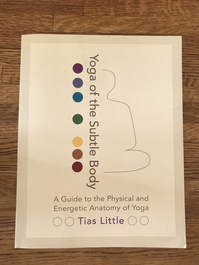
This is the book I've been waiting for.
Have you ever read a book where you didn't even know what you didn't know until you read it? Reading this book, Yoga of the Subtle Body, was like finding the last few puzzle pieces I'd been looking for...BUT, instead of completing my puzzle, it has "springboarded" me to go even deeper into my yoga practice. The introduction starts with the question “What is the subtle body?” which is an excellent question. Indeed, what IS the subtle body?! He describes it as the fine, delicate, infinitesimally small, all-pervading psycho-spiritual force that transcends scientific rationale. (No wonder I had a hard time understanding it pre-book :) ) The neat thing about this book is that Tias unravels the complex and intricate aspects of the subtle body, while using our modern understanding of anatomy and physiology to anchor the teachings. There's more though. He weaves together wisdom from different practices, ages and disciplines including: classic Indian mythology, the chakra and nadis systems, the structural body, traditional Chinese medicine, craniosacral therapy and reflexology. He does a fantastic (and probably very hard) job at distilling and uniting all of this wisdom in one place.
Throughout the book, Tias includes gentle yoga, pranyama and meditation exercises that apply the mind-body principles he shares. These practices are not to be skimmed over, but to be slowly and deeply experienced, allowing the wisdom to absorb. He doesn't talk about asana as mechanical poses, but takes the reader much, much deeper into the felt and internal experience of the pose, and educates the reader on the vibrational, pranic and subtle aspects of the pose.
His writing is poetic and embodied - making this manual even more coveted in my opinion. As I was reading I could feel my inner body responding to his words. For example, "soak your awareness into your heartbeat the way rainwater soaks the ground after a storm," (page 185). It's in his use of language that he achieves his intention of inspiring the reader to look at their yoga practice in a new way. “I believe that ultimately it is impossible to articulate the yogic experience in words. By articulating the body-mind connection through analogy and image (such as lifting the brain stem upward like the hood of a cobra), a direct experience of the sublte body becomes more palpabe. Metaphorical thinking allows for greater flexibility, imagination, and openness, all of which are integral to the mind in meditation.” (page 2)
I found this book very applicable to grief, because grief is a holistic experience that permeates all aspects of our being. It's impossible to outline all the ways this book could be supportive of grief, because everyone's experience is individual - but I can guarantee that there will be something that resonates with your experience. He writes about prana, the immeasurable source of life itself, as being impacted by the powerful effects of emotion (page 3). He writes about the gut and emotional distress. He describe the energy channels and meridians of the legs as being essential for grounding, which can be really helpful in the wake of loss and upheaval. One part that I found really interesting is the hand-lung-heart connection (see photo below).
This review was difficult to write because of the amount of wisdom this book imparts, however, it's suffice to say that I thoroughly enjoyed reading it. So much so, that I'm reading it a second time. No, reading is the wrong word. I'm experiencing it in my body as I go through it again. I plan to take a really, really long time, and (quite literally) take-in, everything I can.
Resources for further exploration...
You can pick up a copy of this book on Amazon Canada by clicking the link below, or visiting your favourite bookstore.
While I was reading this book, I was concurrently doing a series on Gaia called Shapeshift: Exploring Movement & Emotions with Ashleigh Sergeant. She is a student of Tias Little's and offers a great 7 week series that guides you through some of the practices outlined in the book. It was really interesting to combine the two. Highly recommend.
I'd also recommend Tias Little's website - https://www.prajnayoga.net
You can also find him on YouTube. Just search his name in the YouTube search bar, and you'll find lots. READING GIVES US SOME PLACE TO GO WHEN WE HAVE TO STAY WHERE WE ARE. - MASON COOLEY
Namaste,
Sandy It’s been a really long time since I’ve read a yoga book front to back, page to page, in an I-can’t-put-this-down- fervor. I usually flip to a section that speaks to me, or read something that I want to know more about, especially if it is a yoga resource book. Until, “Yoga as Medicine” by Timothy McCall. I have thoroughly enjoyed reading this book, and would recommend it to everyone who is doing yoga to improve their mind, body and spirit. For me, yoga has always been more that just a physical practice. I would describe it more as a mind/spirit practice that has a positive effect on the body! What I love so much about this book is that McCall describes the far-reaching benefits of yoga in regards to all three (mind/body and spirit) so clearly and succinctly that yoga don’t view any of them as separate or distinct. You learn about yoga as an absolutely integrated practice, which is what it has always been, and is exactly where its deep benefits are found. Yoga as Medicine begins with introducing yoga as a form of healing, and as an approach to medicine that is used to benefit the healthy as well as the sick. McCall compares the integrated practice of yoga to the western approach to medicine, and states that it is yoga’s different view that makes it so effective. McCall is an MD, and has seen the benefit of integrating a holistic practice like yoga to complement conventional medical care. McCall’s take on yoga is one that is about “optimizing the function of every system in your body from the muscles to digestion, circulation and immunity. It is about emotional well-being, spiritual resilience, and buoyancy, even joy. Yoga teaches that only when these elements are aligned can you maximize your chance for health and healing” (page 4). There are many things that I love about this book, but to be more specific, I especially love: 1. How McCall is not partial to one style of yoga. He starts to book by describing many different styles of yoga from Iyengar to viniyoga to hot yoga –all with their pros and cons, but more importantly, stressing that no one yoga practice can be prescribed for an entire population. For example, there is not one yoga style or pose that everyone with back pain should do. It is completely dependent on the person, their injury/illness or need, and an educated assessment as to how to maximize function and benefit and minimize risk of injury. I love how individualized and person-centered McCall’s writing is, and his broad understanding of yoga. 2. McCall writes about yoga from a “multi-limbed” perspective in a way that is easy to read and easy to understand. Throughout yoga as medicine, McCall discusses the benefit of yoga from more than just the physical practice. He, of course, outlines physical poses that could be beneficial, but also consistently talks about the need to see yoga as a practice of many “limbs” – including breath work, self-study, ethical and moral observances, concentration and meditation. 3. Experience and Research. Throughout the book, McCall outlines research studies that have taken place that have looked at the effect of yoga on various illnesses/injuries including, cancer, arthritis, back pain, chronic fatigue, insomnia, high blood pressure and many more. He also has case studies in each section, which take a real life example of someone who has practiced yoga as a method of healing with their real-life accounts of the effect it has had. I appreciate this combination of research and experience, as it seems to make a stronger case for the benefit, especially in our culture where we are so scientifically orientated and research based. If you are interested in having a yoga book in your library that is a resource manual for understanding yoga as a multi-facetted practice that has healing benefit this is your book. Whether or not you have any of the conditions listed in the index, this book is an invaluable resource to understanding the subtleties of yoga as a mind/body/spirit practice. I have this book in my Yoga for Grief Support store. From the “resource page,” scroll down until you see the store. Timothy McCall’s Yoga as Medicine can be found there. Further, Timothy McCall has a great website - you can read more about him and his work here. Readers, I would love to hear your thoughts on how yoga has been medicine for you... Namaste, Sandy “Now, Arjuna, I will tell youabout the three kinds of happiness.The happiness which comes from long practice,which leads to the end of suffering. which at first is like poison, but at lastlike nectar – this kind of happiness,arising from the serenityof one’s own mind, is called sattvic. Rajasic happiness comesfrom contact between the sensesand their objects, and is at firstlike nectar, but at last like poison. Happiness is called tamasicwhen it is self-deludingfrom beginning to end, and arisesfrom sleep, indolence and dullness.” Bhagavad GitaTranslation byStephen Mitchell[18.34-38] The Bhagavad Gita is a Sanskrit text, held within the ancient epic poem, the Mahabharata. The date the Gita was written is widely disputed, ranging from the 6thcentury BC to the 1st century AD. The Gita takes places on a battlefield, during the Kurukshetra War. It is a dialogue between two characters: Arjuna, the warrior, who symbolically represents each and every one of us, and Krishna who represents the incarnation of the ultimate mystery of existence (God, Om, the Higher Self, Divine Energy, Universal Consciousness – however you describe that which is bigger than us).
The Bhagavad Gita is a poem of the dialogue held between Arujuna and Krishna. Literally, it is about Arjuna’s hesitancy to wage war against his kinsmen. More deeply, it can be seen as an allegory – representing the good and bad qualities of human existence; our higher consciousness versus our senses, thought, and physical, death bound existence. The Gita is about a call to action. It gives personal instruction on how to live, showing the potential for transformation and ultimately divine realization. It describes the need for action – mindful and devotional action, in the context of a deathless, grander existence. What I love about the stanza I have quoted above, is the paradoxical truth stemming from the internal battle between our search for happiness, and inevitable suffering we all face. We look for happiness and freedom from suffering in all the wrong places – for example, the perpetual acquisition of material goods, staying extremely busy and active to avoid facing painful parts of your life that keep calling for attention, or numbing out with the use of alcohol and drugs. Although these may feel good in the short term, in the end they will lead to more suffering. The wisdom of yoga reminds us that we cannot avoid our life – we cannot selectively numb ourselves to our bad experiences, anymore than we can try to cling to and hang onto our good experiences. Yoga teaches us a middle way, where we understand the nature of the mind as it relates to, and even creates our suffering. It is through this direct understanding that we work with our suffering, in order towork through it. Contrary to popular belief, it is our experience of adversity and hardship that eventually creates wisdom and deep internal serentiy. Yoga invites us to understand the true nature of our minds, and fight our “battles” with proper consciousness and awareness – by neither dispelling and avoiding our experience or clinging to it. To face the truth of our lives takes tremendous courage, over and over again, opening up to both the joy and the pain, all the while, practicing mindful conscious action; Which, inescapably comes from a place of not knowing the outcomes of our actions. And, from here the practice becomes surrendering to the mystery, and trusting that (with time) growth will prevail. The imagry of the lotus is often used in eastern practices and cultures. The lotus grows and is nurtured from the muckiness in the bottom of the pond. It grows up through the murky water and into the air – a beautiful flower resting on top of the pond – gently moving with the ripples and tides of the water. Our yoga practice teaches us to trust that we can and will grow from the dirt of our experience…and that we will learn to flow with the tides of our lives. A modern day quote that speaks about the age-old wisdom of the Bhagavad Gita, is wisdom from Jon Kabat-Zinn’s book Wherever You Go There You Are: “You might be tempted to avoid the messiness of daily living for the tranquility of stillness and peacefulness. This of course would be an attachment to stillness, and like any strong attachment, it leads to delusion. It arrests development and short-circuits the cultivation of wisdom.” Namaste, Our bodies are wise teachers – when we learn to listen.
Yoga provides a space where you begin to notice the links between the mind and body. When you become quiet and still – like in a yoga class or in meditation, the turbulent waters of your daily life begin to calm and the reality of your life calls from the deep. This can be an intense emotional experience, which is both the gift and the challenge of a yoga practice. A gift because in order to reconcile and heal your loss, you must move through the painful centre of your grief. A challenge because it takes great courage to open up to your pain and suffering. The message, from a yogic perspective is to feel what you feel. This can be the hard part. Yoga is about paying conscious attention to your moment to moment experience. This means you notice what happens in both your mind and your body as emotion or memory arises in your practice. You notice when your breath catches in your throat or when your hold your breath. You notice what came first – a thought into your mind, or the holding of your breath. You notice how certain thoughts in your mind can create tension in your neck and shoulders as they creep up by your ears. You feel the hollowness in your chest. You notice how you fight back tears, against all odds, by creating more tension in your face, throat and even in your arms and legs – fighting and clenching around the possibility of letting yourself cry. You notice that lump in your throat that feels like it’s choking you. Once you notice your internal reactions, you learn how to feel what you feel. Tuning into the feeling behind the feeling versus the story behind the feeling. Another way of explaining that is to notice the sensation behind the feeling. Sense what emotion feels like as it arises – for example, tightening of the throat – perhaps you feel your throat narrow and close, becoming strained and tense. As tears well up you feel the wetness, as well as a rush of heat, and an internal need for release. Perhaps you feel your thigh muscles tighten and your weigh move forward as if you want to run. You feel the feeling of having tightness in the shoulders or heaviness of the limbs – you feel the density and thickness of your stressed and tired body. Perhaps you feel the smooth, silkiness of your breath as you sigh and at the same time feel the jaw bone turn to putty and your eyes soften. Your body melting into tenderness. When you feel what you feel you open your heart to your experience. Having a quiet mind, you don’t get caught in the mental loop of your story, you only notice the sensations of your experience as they arise and move through you. Surrender to what is. Be open to allowing the sensations of life to move through you. With consistency and dedication to practicing this way, you learn more about yourself and your journey. Your body, mind and emotions begin communicating with you in a more subtle way – where you pay attention to the signals because you respect their wisdom. This opens up a whole new road of choice when it comes to mourning authentically and expressing your grief outside yourself. It all begins with feeling what you feel. |
AuthorSandy Ayre Categories
All
Archives
December 2022
|
Classes
|
Helpful Info
|
|


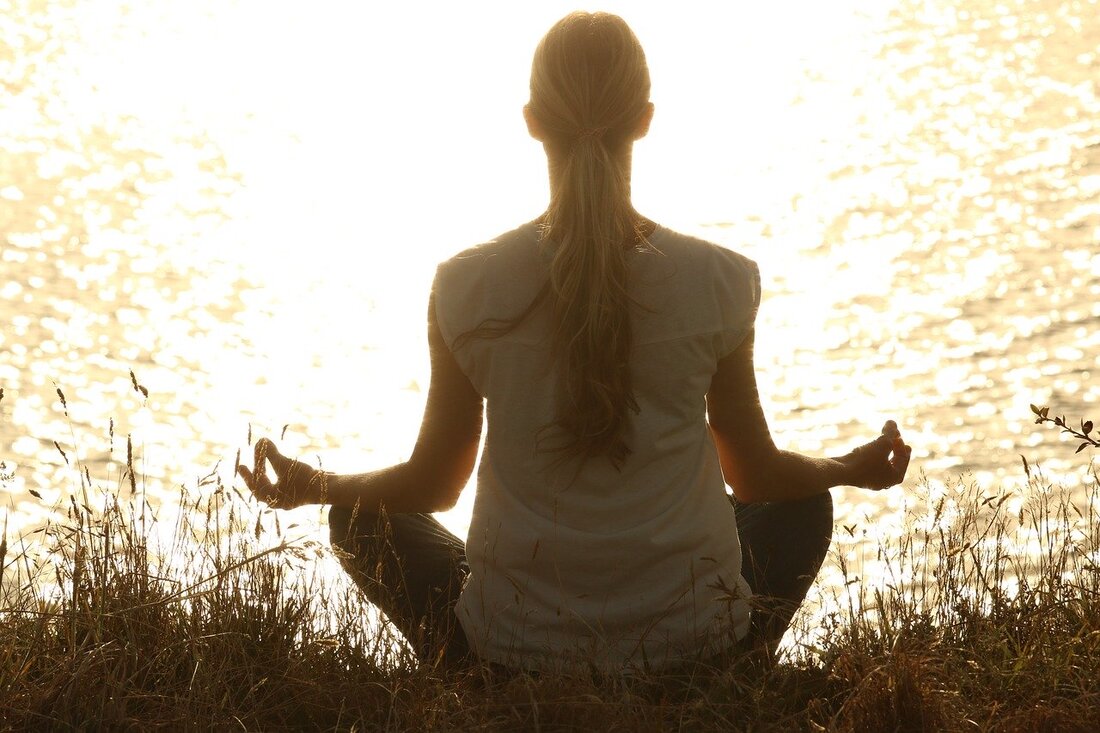
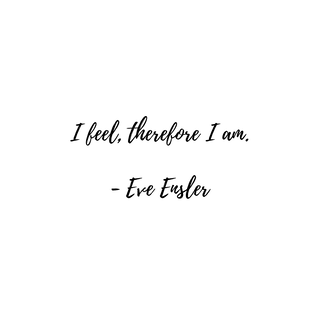
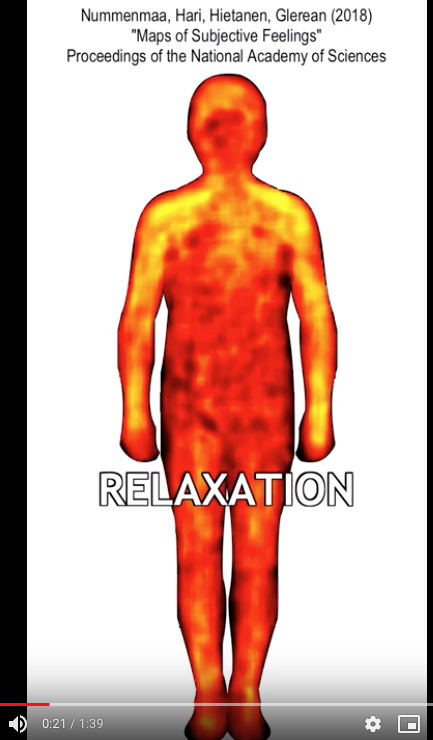
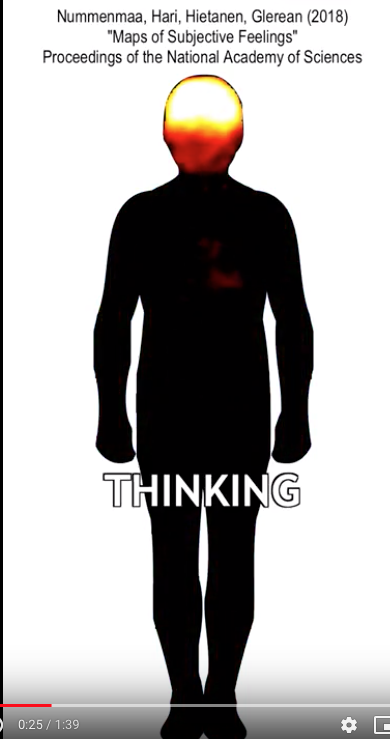
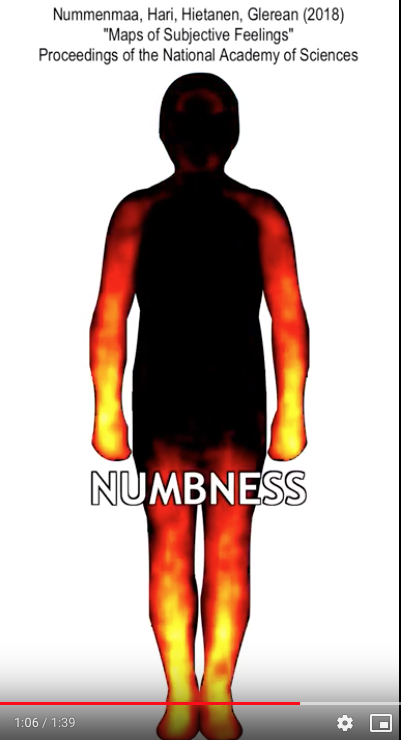
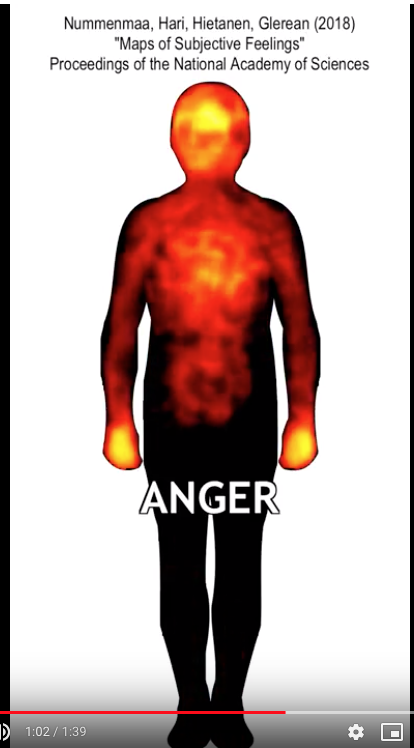
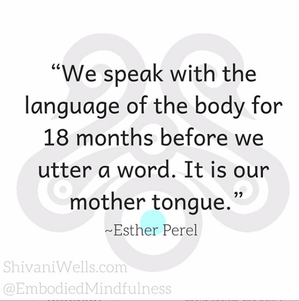

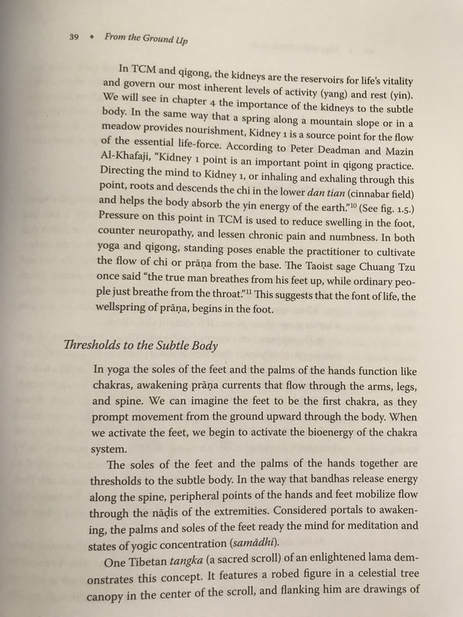
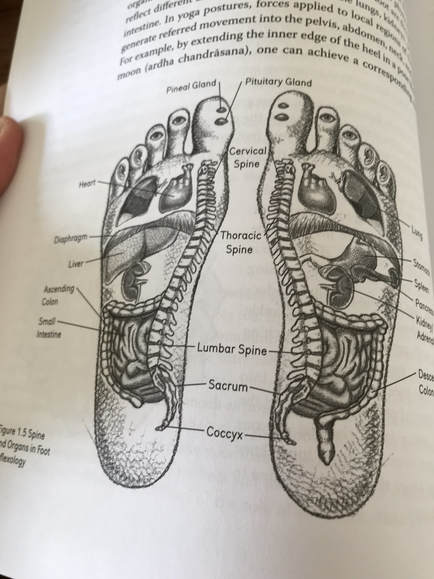
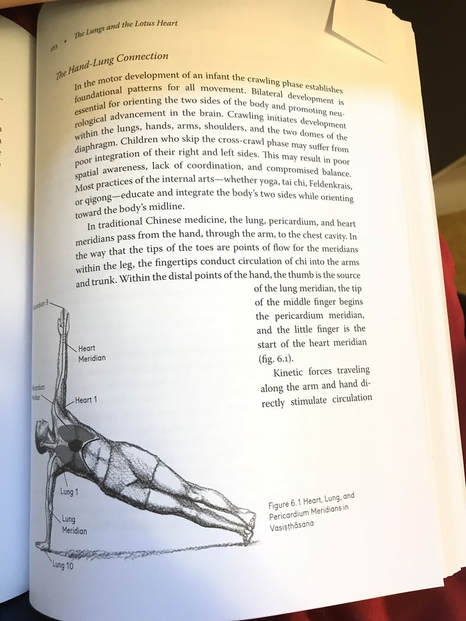
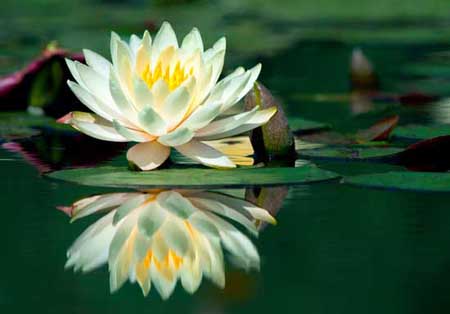
 RSS Feed
RSS Feed
